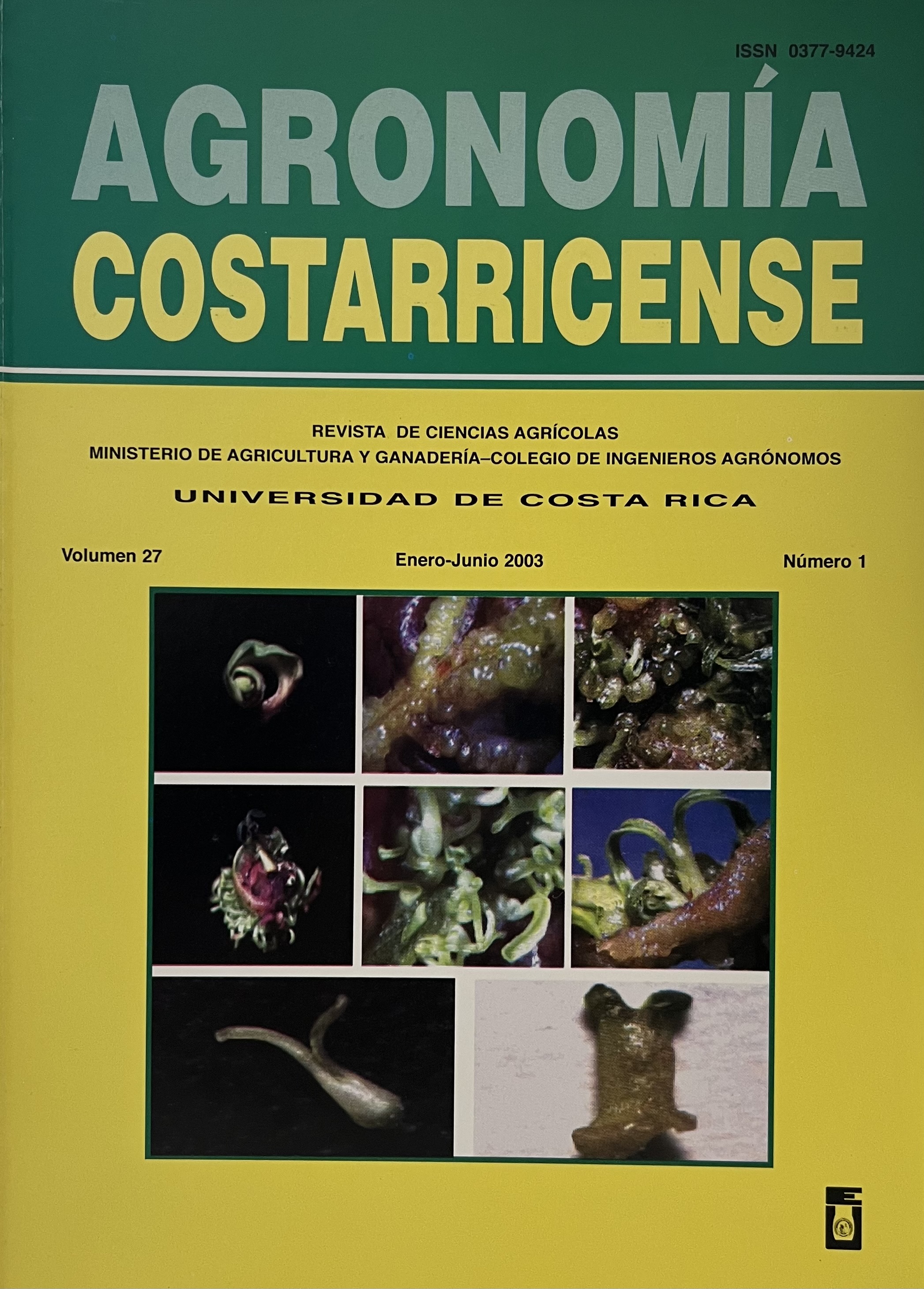Abstract
Some quality export criteria for cassava (Manihot esculenta), white cocoyam (Xanthosoma sagittifolium), purple cocoyam (X. violaceum), yam (Dioscorea alata), ginger (Zingiber officinale) and Taro (Colocasia esculenta var antiquorum) were evaluated at the shipping port market in Moin, Limón. Evaluations were carried out all year long; results were compared with the proposed quality stan dards for every crop, to determine if the export offer is complying with minimum quality standards of grade and quality for every one of those crops. For cassava it was found that the size of the export roots is 97-99% within the defined size categories. However, the surface damage of the cassava roots was 25%, from this 9% corresponds to severe damage. In this case the surface damage is beyond the tolerance (10% total and 1% severe) which indicates the need for improving packing methods. For cocoyam, weight and size of the cormels were 90 to 100% within the categories, but surface damages were present in 24% of the evaluated cormels, from this 7% were severe damages. For yams the size of the tubers were 100% within the acceptable range. A 17% of tubers showed some kind of surface damage, with 1% of severe damages. Ginger and taro also were acceptable in terms of ryzome/cormel size, but they fail to comply with the proposed standards due to surface damages and especially due to the severe-damage level shown. In general, shape, size and weight of the cormels seems to represent no obstacle for costarican exporters, but surface damages to the cormel and the presence of severe damage were beyond the tolerance limits established by the proposed standard of grade and quality.
##plugins.facebook.comentarios##

This work is licensed under a Creative Commons Attribution-NonCommercial-NoDerivatives 4.0 International License.
Copyright (c) 2024 Agronomía Costarricense


